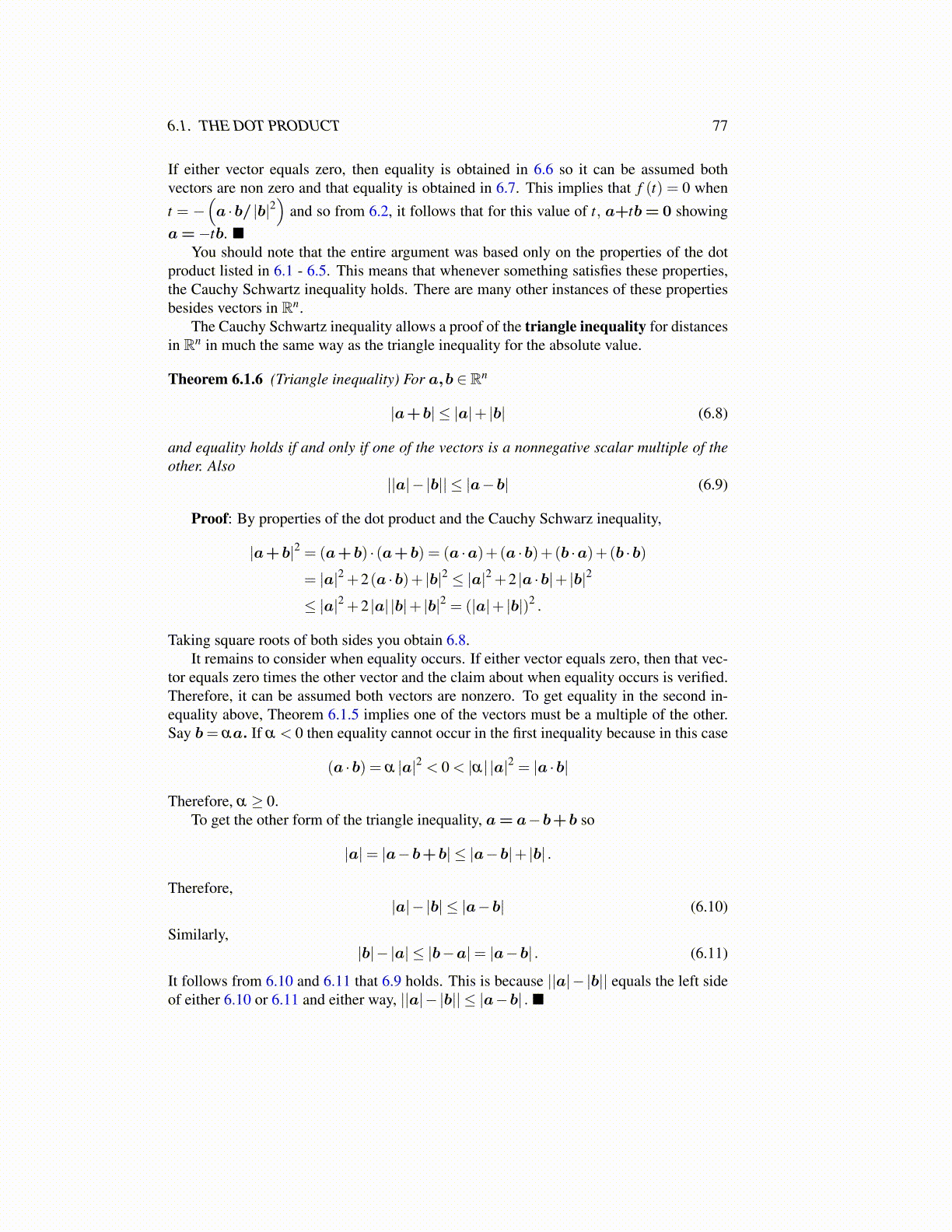
6.1. THE DOT PRODUCT 77
If either vector equals zero, then equality is obtained in 6.6 so it can be assumed bothvectors are non zero and that equality is obtained in 6.7. This implies that f (t) = 0 whent = −
(a ·b/ |b|2
)and so from 6.2, it follows that for this value of t, a+tb= 0 showing
a=−tb. ■You should note that the entire argument was based only on the properties of the dot
product listed in 6.1 - 6.5. This means that whenever something satisfies these properties,the Cauchy Schwartz inequality holds. There are many other instances of these propertiesbesides vectors in Rn.
The Cauchy Schwartz inequality allows a proof of the triangle inequality for distancesin Rn in much the same way as the triangle inequality for the absolute value.
Theorem 6.1.6 (Triangle inequality) For a,b ∈ Rn
|a+b| ≤ |a|+ |b| (6.8)
and equality holds if and only if one of the vectors is a nonnegative scalar multiple of theother. Also
||a|− |b|| ≤ |a−b| (6.9)
Proof: By properties of the dot product and the Cauchy Schwarz inequality,
|a+b|2 = (a+b) · (a+b) = (a ·a)+(a ·b)+(b ·a)+(b ·b)
= |a|2 +2(a ·b)+ |b|2 ≤ |a|2 +2 |a ·b|+ |b|2
≤ |a|2 +2 |a| |b|+ |b|2 = (|a|+ |b|)2 .
Taking square roots of both sides you obtain 6.8.It remains to consider when equality occurs. If either vector equals zero, then that vec-
tor equals zero times the other vector and the claim about when equality occurs is verified.Therefore, it can be assumed both vectors are nonzero. To get equality in the second in-equality above, Theorem 6.1.5 implies one of the vectors must be a multiple of the other.Say b= αa. If α < 0 then equality cannot occur in the first inequality because in this case
(a ·b) = α |a|2 < 0 < |α| |a|2 = |a ·b|
Therefore, α ≥ 0.To get the other form of the triangle inequality, a= a−b+b so
|a|= |a−b+b| ≤ |a−b|+ |b| .
Therefore,|a|− |b| ≤ |a−b| (6.10)
Similarly,|b|− |a| ≤ |b−a|= |a−b| . (6.11)
It follows from 6.10 and 6.11 that 6.9 holds. This is because ||a|− |b|| equals the left sideof either 6.10 or 6.11 and either way, ||a|− |b|| ≤ |a−b| . ■